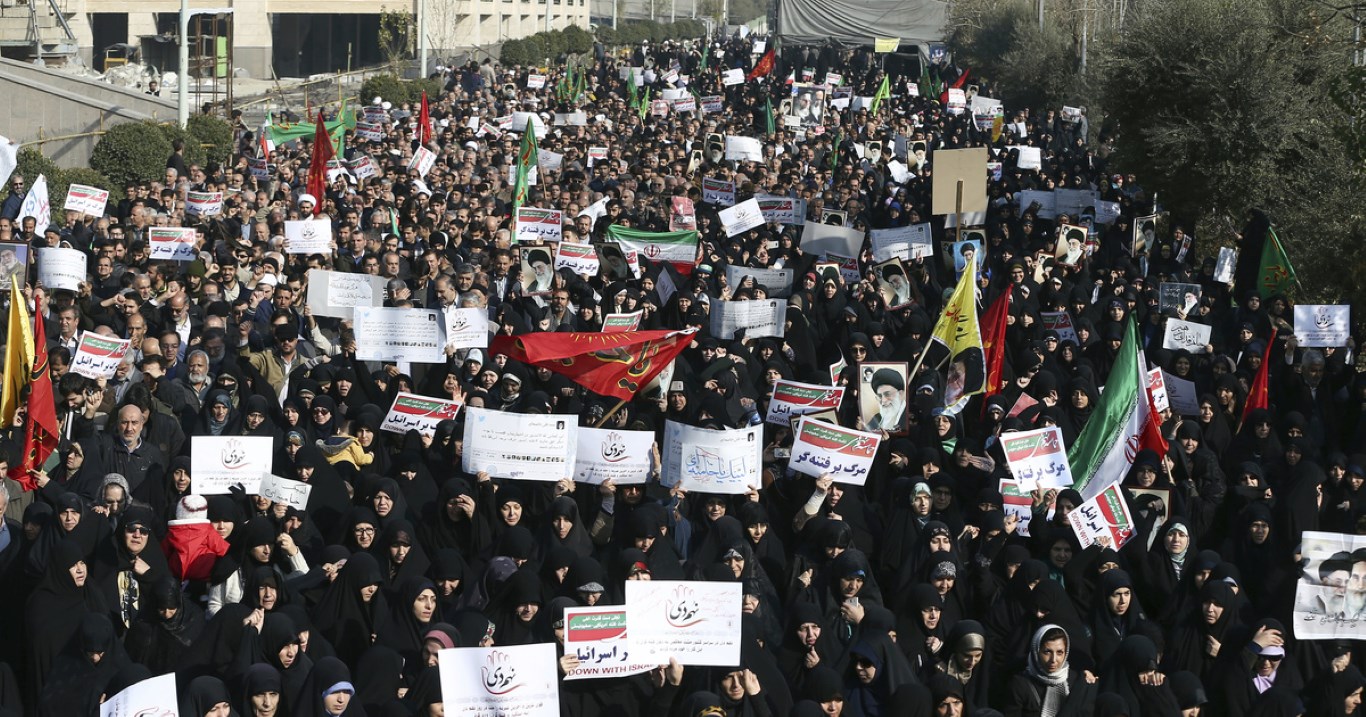Why are the protests happening?
January 3, 2018 | Expert Insights

The official death toll due to anti-government protests in Iran has risen to 20. The protests have entered for the sixth day consecutive day.
These are the worst anti-government protests in close the decade and the biggest challenge to the current regime. Why are Iranians protesting?
Background
Iran became an Islamic republic in 1979, when the monarchy was overthrown, and clerics assumed political control under supreme leader Ayatollah Khomeini. Iran has been led by a highly conservative clerical elite since the revolution in 1979.
Modern day Iran is considered one of the most oppressive regimes in the world. The government of Iran has been criticized both for restrictions and punishments that follow the Islamic Republic's constitution and law. In 2016, the United Nations General Assembly approved a resolution expressing “serious concern” about Iran’s high rate of executions without legal safeguards, ongoing use of torture, widespread arbitrary detentions, sharp limits on freedom of assembly, expression, and religious belief, and continuing discrimination against women and ethnic and religious minorities, including Baha’is.
Protests stemming from economic discontent erupted on 28 December 2017. Several crowds were seen protesting across Iran, including in Mashhad, the second most populous city. In addition, hundreds came to protest against the current regime in the country’s capital city of Tehran.
After the disputed victory by Iranian President Mahmoud Ahmadinejad in the 2009 elections, protests erupted in support of opposition candidates Mir-Hossein Mousavi and Mehdi Karroubi, occurred in major cities nationwide from 2009 into early 2010. Protests once again took place between 2011 and 2012. On 14th February, the demonstrations began and it was dubbed the “the Day of Rage.” In all cases, reports emerged of the government enforcing a strict crackdown on dissidents and protestors.
Analysis
The official death toll due to anti-government protests in Iran has risen to 20. The protests have entered for the sixth day consecutive day. These are the worst anti-government protests in close the decade and the biggest challenge to the current regime.
The Rial has sunk to 42,900 against the U.S. dollar from 36,000 a year ago. The unemployment rate among those aged 15 to 29 is well over 24%. The International Monetary Fund is projecting the economy to expand by 4.2% in the year to March 2018 -- it was contracting five years ago. Annual inflation has fallen to 10% from 34%.
“There is a crisis of expectations in Iran,” said Tamer Badawi, a research fellow at the Istanbul-based Al-Sharq Forum. “It is a deep sense of economic frustration. My guess is that nothing significant will change. The government will try to be open with people, to propose initiatives, but there are structural problems - diversification, the banking problem and relations with the rest of world, especially Trump.”
Saeed Leilaz, a Tehran-based analyst, said that Mr. Rouhani’s political rivals may have played a role in organizing the protests. He said, “There are more than three million jobless in Iran, and more than 35 percent of Iranians are under the poverty line. These are Rouhani’s problems, and could kill any government. I won’t be shocked if inflation hits 12 percent.”
Protesters also asked why the country was spending a lot of money on conflicts elsewhere in the Middle East when people were suffering at home. People are also unhappy that the nuclear deal did not result in better living standards and immediate boost to the economy.
US President Donald Trump has weighed in on the situation noting, “Iran is failing at every level despite the terrible deal made with them by the Obama Administration. The great Iranian people have been repressed for many years. They are hungry for food & for freedom. Along with human rights, the wealth of Iran is being looted. TIME FOR CHANGE!” Meanwhile, the European Union has stated that it was monitoring the situation.
Assessment
Our assessment is that Rouhani’s government is facing its greatest challenge domestically. There is a crisis of faith between the government and the people and the head of the state has likely lost his mandate in the process. The Rouhani government may have to remove itself from some of its vested foreign interests in order to funnel funds towards economic measures to improve the current standard of living. However, this could result in some of its enemy states like Israel gaining more ground in the region.








Comments